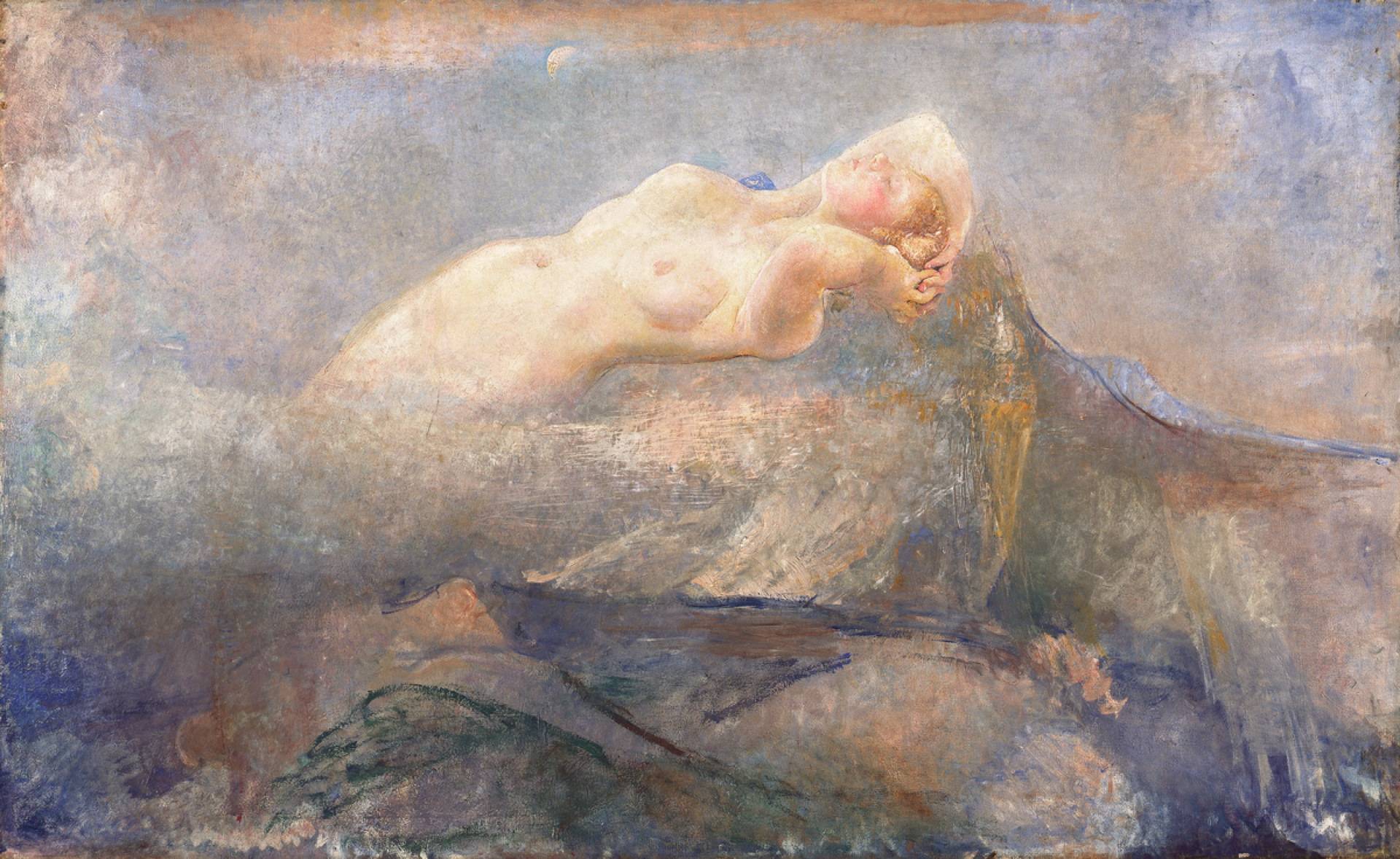Annie Swynnerton: Painting Light and Hope
Annie Swynnerton campaigned for women’s rights in art and politics but was one of a generation of female artists who fell into obscurity says Rebecca Milne
Who was Annie Swynnerton?
Born Annie Robinson in 1844 in Hulme, Manchester, she grew up in a large and aspiring middle-class family that seem to have suddenly fallen on hard times in 1869. Later that year with her younger sisters Emily and Julia, she attended classes at the Manchester School of Art. The sisters lived and worked together throughout the 1870s and they painted small watercolour illustrations to make a living. Swynnerton trained at the MSA for five years and began to exhibit at the Royal Manchester Institution, now Manchester Art Gallery, from 1871. She gained the patronage of wealthy Manchester industrialists and businessmen, receiving commissions from the likes of Henry Boddington and William Gaskell.
Tell me about the Manchester Society of Women Painters.
Swynnerton and other female students from MSA were frustrated with the limited access they had to studying the human form and the barriers to membership of Manchester Academy of Fine Arts. At MAFA attendance at life classes was a prerequisite but conventions deemed it inappropriate for women to study from the nude model, especially in mixed classes with men.
In 1874 nine female artists including Swynnnerton petitioned MAFA and a category of membership known as lady exhibitors was established, but she and her female colleagues wanted full membership on equal terms with men. They established the MSWP and organised classes and exhibitions. They were well received, which must have put further pressure on the MAFA. They finally admitted women on equal terms with men in 1884. The MSWP then disbanded, having achieved its aims.
Was her feminism represented in her work?
Yes. Swynnerton was a passionate supporter of women’s rights throughout her life and politics, feminism and art are closely aligned within her paintings. In her portraits she challenged conventions in the representation of women. She was concerned to convey the individuality of her sitters, rather than focus solely on fashionable appearance and beauty. She celebrated real women and their achievements, as for example in her portrait of women’s right to vote campaigner Millicent Fawcett.
Paintings such as The Tryst, An Italian Mother and Child and The Southing of the Sun show her sustained interest in painting contemporary working-class women in ways that were unlike the sentimental, idealised or picturesque paintings of similar subjects by male artists. In her imaginative paintings of the 1890s and early 20th century she represents hope for women’s future freedoms – the figures are often winged or armour-clad, and such imagery, which was also employed by other women artists, was a source of inspiration for emblems adopted by the women’s movement. Swynnerton also depicted the nude according to her own agenda – realistic, unidealised female bodies that challenged the conventional representations of female beauty by 19th century male academic artists.
Why is this the first major exhibition of her work since 1923?
Swynnerton is one of a generation of late 19th and early 20th century female artists who have fallen into obscurity. Factors which led to this include the dominance of male artists, administrators and historians in the art world and prejudices that deemed women incapable of creative thought and vision equal to men. Swynnerton fought this in her own lifetime but bias, tradition and convention have meant that studying and evaluating the work of female artists like her is still difficult. In 1922 Swynnerton was elected the first woman associate of the Royal Academy of Arts, London, since its foundation in 1768. This groundbreaking accolade came late for an artist with an international reputation and she was also over the age at which she could be made a full Royal Academician. She was 78 by then – it was probably of limited benefit in that respect.
